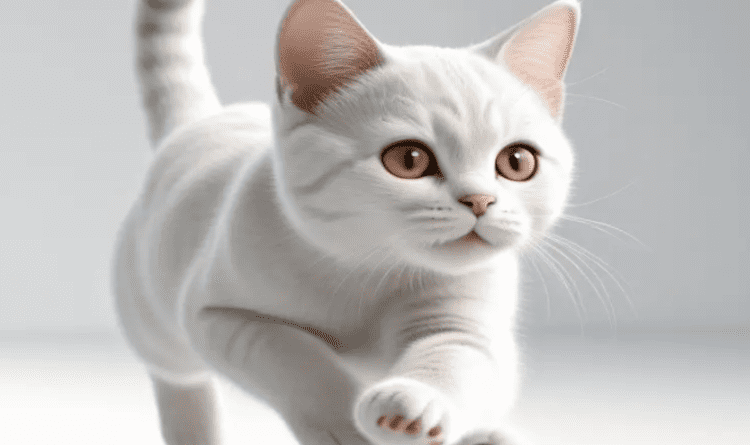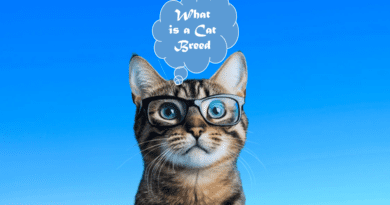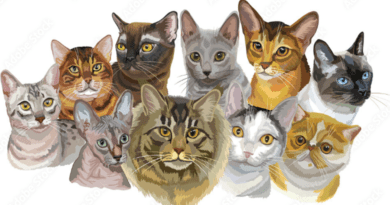Understanding Cat Breed Characteristics
Cats have been human companions for thousands of years, and over time, distinct breeds have emerged, each with its own set of characteristics. These characteristics can range from physical traits like coat types and colors to personality quirks and temperamental tendencies. In this article, we’ll delve into the various aspects that define the unique characteristics of different cat breeds.
1. Physical Appearance
Physical characteristics are often the first noticeable trait that sets a breed apart. Cat breeds vary greatly in size, coat texture, eye color, and body structure.
Size and Build
Cats range from the delicate and slender to the robust and muscular. For instance, the Maine Coon, one of the largest domesticated cat breeds, is known for its sturdy and muscular build, with males weighing up to 18 pounds or more. In contrast, the Singapura is one of the smallest breeds, weighing just 4-6 pounds on average.
Facial Structure
Different breeds also have unique facial structures. The Persian cat is known for its flat face and large, expressive eyes, while the Siamese has a more angular face with almond-shaped eyes and large ears. The distinctively wild-looking Bengal cat boasts a broad head and high cheekbones, reminiscent of its wild ancestors.
Coat Types
Coat length and texture vary significantly between breeds. Cats can be long-haired, short-haired, or hairless.
- Long-Haired Breeds: Breeds like the Persian and the Ragdoll have luxurious, long, and thick coats that require regular grooming to prevent matting.
- Short-Haired Breeds: Breeds such as the British Shorthair and the Abyssinian are easier to groom due to their short, dense coats.
- Hairless Breeds: The Sphynx is a well-known hairless breed, but it still requires special care, such as regular bathing to remove excess oils from the skin.
Color Patterns
A cat’s coat can come in a wide range of colors and patterns, from solid and tabby to tortoiseshell and calico. Breeds like the Siamese are recognized for their pointed coat pattern (darker color on the ears, face, paws, and tail), while the Russian Blue is known for its solid blue-gray coat. The Bengal, on the other hand, has striking leopard-like spots or marbled patterns, giving it an fascinating appearance.
2. Eye Color and Shape
Eye color and shape are another defining characteristic of cat breeds. While many cats share common eye colors like green, blue, or gold, some breeds are known for their particularly unique eye traits. For example, the Siamese and Tonkinese have vivid blue eyes, while the Russian Blue typically has emerald-green eyes.
Heterochromia, a condition where a cat has two different colored eyes, is common in breeds like the Turkish Van and Turkish Angora. In these cats, one eye is often blue, while the other is green or amber, creating a striking visual contrast.
3. Personality and Temperament
While each individual cat has its own unique personality, certain breeds are known for specific behavioral traits. These temperamental characteristics are often a key factor for potential owners when choosing a breed that fits their lifestyle.
Active and Playful Breeds
Some breeds are highly energetic and require a lot of stimulation and playtime.
- The Abyssinian is one of the most active cat breeds, known for its curiosity and love of exploration. This breed enjoys climbing and requires ample playtime to stay mentally and physically stimulated.
- The Bengal, with its wild ancestry, is also very active and loves to jump and play. Their high energy levels make them ideal for families that can dedicate time to interactive play.
Affectionate and Social Breeds
Other breeds are more affectionate and thrive on human interaction.
- The Ragdoll is often called the “puppy cat” because of its tendency to go limp when held, and its gentle, laid-back nature makes it one of the most loving breeds.
- Siamese cats are also known for being extremely social and vocal, often following their owners around the house, engaging in constant communication.
Independent Breeds
On the opposite end of the spectrum, some breeds are more independent and prefer less constant interaction with humans.
- The British Shorthair is known for being reserved and dignified, enjoying a calm and quiet household. They are affectionate but generally don’t demand attention.
- Norwegian Forest Cats are also relatively independent, enjoying exploration and self-sufficient activity, though they form strong bonds with their owners.
4. Grooming Needs
Grooming is an essential part of caring for any cat, but some breeds require more maintenance than others, depending on their coat type.
High-Maintenance Breeds
Long-haired breeds, such as the Persian and Himalayan, require daily brushing to prevent tangles and mats from forming. These cats also benefit from regular baths, and their facial folds need to be cleaned frequently to prevent infection.
Low-Maintenance Breeds
Short-haired breeds like the Burmese or Scottish Fold require minimal grooming. Weekly brushing is usually enough to remove loose hair and keep their coat in good condition. The Sphynx, while hairless, needs regular baths to remove the oils that would normally be absorbed by a cat’s fur.
5. Breed-Specific Health Concerns
Different breeds are prone to specific genetic health issues. It’s important for cat owners to be aware of these potential health problems to provide proper care and seek early veterinary intervention when necessary.
- Maine Coons are susceptible to hypertrophic cardiomyopathy (HCM), a genetic heart disease that can be life-threatening if not managed properly.
- Persians often face respiratory issues due to their flat faces and are prone to dental problems as well.
- Sphynx cats, lacking fur, can develop skin conditions and are at a higher risk of sunburn, making them more sensitive to changes in temperature.
Regular vet check-ups, proper nutrition, and maintaining a good grooming routine are essential for managing these breed-specific health concerns.
6. Vocalization and Communication
While all cats communicate through a variety of vocalizations, certain breeds are known for being particularly talkative or quiet.
- Siamese cats are famous for their loud, frequent vocalizations. They enjoy “talking” to their owners and will often follow people around the house, vocalizing their needs.
- On the quieter side, breeds like the Russian Blue and British Shorthair are known for their soft, infrequent meows, making them ideal for owners who prefer a quieter home environment.
Each cat breed offers a unique blend of physical traits, personality, grooming needs, and health considerations. Understanding these breed characteristics can help you choose a cat that fits well with your lifestyle and preferences. Whether you’re looking for an affectionate lap cat, a playful companion, or a low-maintenance pet, the world of cat breeds has something to offer for every cat lover.




